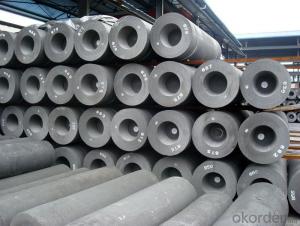Graphite electrodes, once merely a component in the world of metallurgy, have now taken center stage in various modern technologies. These cylindrical wonders are made from pure graphite, a form of carbon that’s both crystalline and amorphous. They’ve come a long way from their humble beginnings, evolving into a versatile material that’s now integral to a multitude of industries.
Let’s dive into the fascinating world of graphite electrodes and explore their advanced uses. But first, a little backstory. Graphite electrodes were initially used in electric arc furnaces for producing steel. They’re still used for this purpose today, but their applications have expanded far beyond the steel mill.
One of the most exciting areas where graphite electrodes shine is in the field of electric vehicles (EVs). These sleek, eco-friendly machines are becoming increasingly popular, and graphite electrodes play a crucial role in their batteries. The high energy density and conductivity of graphite make it an ideal material for the anodes in lithium-ion batteries, which power most EVs. This means that graphite electrodes contribute to the performance, efficiency, and longevity of these batteries, helping to reduce our reliance on fossil fuels and combat climate change.
Another area where graphite electrodes are making a splash is in the renewable energy sector. Solar panels and wind turbines are becoming more prevalent as we strive to reduce our carbon footprint. Graphite electrodes are used in the manufacturing process of these renewable energy technologies, specifically in the production of silicon for solar panels and the forging of wind turbine components. Their high thermal conductivity and resistance to corrosion make them perfect for these applications.
But that’s not all. Graphite electrodes are also finding their way into the medical field. They’re used in various medical devices, such as pacemakers and defibrillators, due to their biocompatibility and ability to conduct electricity without generating heat. This makes them safe for use in the human body. Additionally, they’re used in the production of pharmaceuticals, where their purity and chemical stability are highly valued.
In the world of manufacturing, graphite electrodes are used in the production of various metals, including titanium, zirconium, and hafnium. These metals are essential for the aerospace industry, as well as for creating high-strength alloys used in automotive and construction applications. The high melting point and electrical conductivity of graphite electrodes make them indispensable in these processes.
The electronics industry is another area where graphite electrodes are making their mark. They’re used in the manufacturing of semiconductors and other electronic components, thanks to their ability to withstand high temperatures and resist corrosion. This ensures the reliability and longevity of the devices we use every day.
But what about the environment? You might be wondering how sustainable the use of graphite electrodes is. The good news is that the graphite industry is making strides in this area. Efforts are being made to source graphite responsibly and to recycle and reuse graphite materials wherever possible. This helps to reduce the environmental impact of graphite production and use.
In conclusion, graphite electrodes have come a long way from their origins in steel production. They’re now a key component in a wide range of modern technologies, from electric vehicles and renewable energy to medical devices and electronics. Their versatility, conductivity, and thermal properties make them invaluable in today’s world. As we continue to innovate and push the boundaries of what’s possible, it’s clear that graphite electrodes will remain an essential part of our technological landscape.

